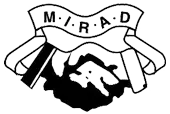A Guide To Car Registration Plates Letter Combinations
Reg Plates ArticleA Guide To Car Registration Plates Letter Combinations

For many drivers, car registration plates, those ubiquitous metal rectangles on the front and back of vehicles, are simply a way to identify a car. But beneath their seemingly random jumble of letters and numbers lies a hidden language, a code that reveals the car's origin story. While most people can decipher the numbers as signifying the year of registration, the meaning of the preceding letters often remains a mystery. This article delves into the fascinating world of car registration plates, unveiling the secrets encoded within those first two characters.
A History of Identification:
Car registration plates, also known as private reg plates, have a surprisingly long history. The earliest examples can be traced back to late 19th century France and Germany, where rudimentary systems were employed to identify horse-drawn carriages transitioning to motorised vehicles. As the automobile industry boomed in the early 20th century, the need for a standardized registration system became paramount. This led to the introduction of unique alphanumeric sequences for each vehicle, a system that has evolved over time to incorporate regional identifiers.
The Regional Decoder Ring:
The key to unlocking the secret of the letters on car registration plates lies in the concept of regional identifiers. In many countries, including the United Kingdom, the first two or three letters on a plate don't represent randomness, but rather a code that indicates the location where the car was originally registered. This system serves several purposes. It allows authorities to track vehicle ownership and taxation more efficiently. It can also be helpful for law enforcement in identifying stolen vehicles or those involved in criminal activity.
Lifting the Veil: Unveiling Regional Codes
Let's take the United Kingdom as an example. The Driver and Vehicle Licensing Agency (DVLA) issues registration plates with specific letter codes assigned to different regions. A driver cruising down the motorway with a plate starting with "L" likely hails from London, while a "Y" prefix suggests Yorkshire origins. Similarly, "B" signifies Birmingham, "M" stands for Manchester, and "S" denotes Scotland. This regional coding system offers a glimpse into a car's geographical background.
Beyond Location: The Nuances of the System
It's important to note that the regional coding system isn't static. Over time, the allocation of codes can change due to factors like population shifts and administrative restructuring. Additionally, some countries employ a combination of letters and numbers for regional identifiers, offering a more granular level of detail. For instance, in a system using three alphanumeric characters, the first letter might signify a broad region, while the subsequent characters pinpoint a specific area within that region.
Beyond Borders: A Global Perspective
While the specifics of regional coding may vary, the underlying principle remains consistent across many countries. In the United States, for example, each state has its own unique system for issuing license plates, often incorporating state symbols or mottos. Similarly, the European Union mandates a standardized format for registration plates, allowing for easier identification of vehicles across member states.
The Power of Personalization:
The regional coding system forms the foundation of car registration plates. However, in some countries, there's a growing trend of personalized plates. For a fee, drivers can choose a specific combination of letters and numbers that hold personal significance, perhaps reflecting their initials, a cherished location, or a favourite sports team. While personalization adds a touch of individuality, it often comes at the expense of the regional identifier, making it harder to pinpoint a car's origin.
A Lifelong Learning Journey:
The world of car registration plates may seem like a mundane detail, yet it holds a surprising depth of history, practicality, and even a touch of personal expression. Understanding the regional coding system embedded within those seemingly random letters not only unveils a hidden layer of information but also adds a touch of intrigue to our everyday encounters with vehicles on the road. So, the next time you find yourself behind a car, take a moment to decipher its registration plate. You might just discover a fascinating story waiting to be told.
It all started back in 1991 when our love and obsession for private number plates was born.
Since then we have grown steadily over the years to become a leading light in the private number plate industry holding our own stock of high quality number plates and many thousands of registrations we are selling for trade and private clients including many celebrities and sports personalities.


- FREE TRANSFER SERVICE - your paperwork is handled by our trained team
- OVER 30 YEARS EXPERTISE - long established and trusted company
- DVLA RECOGNISED RESELLER - linked directly from the DVLA website
- TRADE ASSOCIATION MEMBERS - MIRAD and CN Guild members


